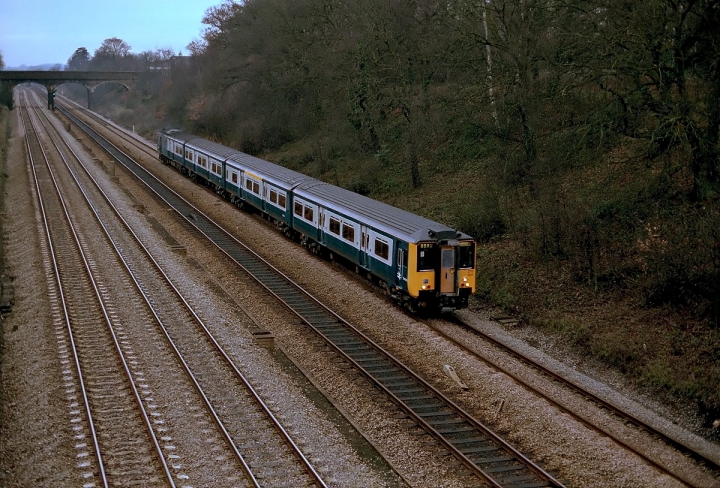Back in 1978, British Rail’s fleet of 1950s design diesel multiple units was ageing rapidly, and alongside a refurbishment programme, BR was designing and building its second-generation dmus – the Class 210.

Unit 210 001 on a test run near Sonning Cutting on the WR main line on 29th December 1982. Photo Courtesy: Stephen Dance
Its design was almost literally built on existing components and architecture, using mechanical parts developed for other passenger rolling stock, with bodywork matched to the then ‘new’ Mark III Inter-City passenger coach. They were of course built by BR’s manufacturing arm “British Rail Engineering Ltd.”, which at its 12 and more workshops employed almost 40,000 people.

Extract courtesy of the Railway Industry Association (RIA); “Railpower” June 1978
First mention of the plans for the new DMU design appeared in the Railway Industry Association’s “Railpower” magazine in June 1978. This new development took place at the time British Rail was also busy refurbishing the first generation multiple units, and saw the likes of the old Metropolitan-Cammell built units repainted in “Rail Grey” with a “Rail Blue” band at waist height. It may have looked a bit odd at the time, but was soon outdone by the garish colours of Network Southeast livery when BR went through its “Sectorisation” phase.
What made the new design different was the use of a diesel engine above the vehicle floor. From the 1950s the dieselisation programme used multiple units with underfloor engines and transmissions, whilst the Class 210 was unconventional. But, it was not without precedent on BR, since the Southern Region had already deployed similar train sets, known as “Hampshire” Line sets,

British Rail Class 210 diesel-electric multiple unit at Reading station on 30 May 1982 for the type’s first passenger service. Photo (c): RCawsey
There were two ‘prototype’ units – a 4-car set and a 3-car set – powered by different engines and electrical equipment. The 4-car set (210 001) was powered by a 1,125hp Paxman engine, and paired with Brush electrical equipment, whilst the 3-car set (210 002) was fitted with a 1,140hp MTU engine and GEC electrical equipment.
 Intended for providing a high-power dmu on the Western Region around the London area, and beyond, including a route from Reading to Taunton. They were tested at various locations around the country, and even appeared at ‘open days’, such as Carlisle Kingmoor in September 1982. In October 1983 the 4-car set was tested in Scotland on services between from Edinburgh and Glasgow to Dundee, Fort William and Inverness, but by mid November was returned to the Western Region.
Intended for providing a high-power dmu on the Western Region around the London area, and beyond, including a route from Reading to Taunton. They were tested at various locations around the country, and even appeared at ‘open days’, such as Carlisle Kingmoor in September 1982. In October 1983 the 4-car set was tested in Scotland on services between from Edinburgh and Glasgow to Dundee, Fort William and Inverness, but by mid November was returned to the Western Region.
They were described as having ‘excellent performance’, but were definitely not efficient in terms of the use of space in what was essentially a Mark III coach body.
All were withdrawn from service as DMUs by the end of 1986, although the trailer vehicles found their way into the development of the “Networker” series of trains adopted successfully by BR’s “Network Southeast Sector”.
In essence the pilot of the Class 210 design was sadly a bit of a failure, as the BREL York built Class 150 “Sprinter” series were a much better solution operationally.
